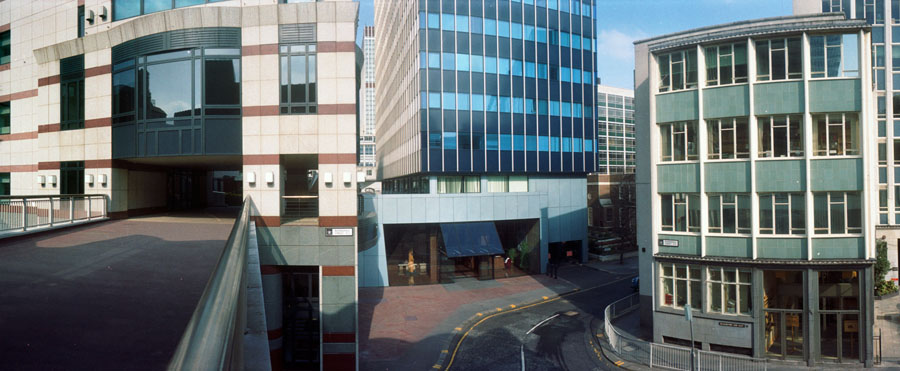I’m not quite sure what happened to me in March 2008, because I lost a web site. It was only quite a small site, with a dozen or so pictures, but I wrote it and then just forgot about it. Completely.
This morning by chance looking for another set of files I came across the folder it was in, though from the name it wasn’t obvious, but curiosity made me take a quick look and see a list of files mainly starting with 92-city, which meant nothing to me, so I double-clicked on the default.html file with them and got a surprise.

It says on the site:
These pictures were taken when I was a part of London Documentary Photographers in 1992 and were a part of a documentary project on the City of London. The ‘square mile‘ is one of the major financial centres of the world. These images were first shown at the Museum of London in 1992.
I think I was probably intending to put together a larger site including many more of my panoramic images, but since that’s unlikely to happen in the near future I decided to link them in to one of my existing sites, The Buildings of London, which is long overdue for a makeover. But you can jump directly to them here, though you may need to make your browser window wider; the images on the site are exactly twice the width of the one in this blog at 900 pixels and the site was written to fit a page around a thousand pixels or wider.
All of these images were taken on a panoramic camera with a lens that rotates through around 120 degrees during the exposure. At the time I was using a Japanese Widelux camera, but later I preferred the much cheaper Ukranian Horizon which has a considerably better viewfinder.
Although the Widelux does have a viewfinder, the most accurate indication of what you are going to take is provided by a couple of arrows on the top plate. For best results, at least with architectural subjects, you needed a tripod and a good spirit level, while the Horizon was easily usable hand-held and had a level visible in the viewfinder.
There are several different models of Horizon, but all except the oldest, which had a metal body share a similar rounded plastic body. It would be great to have a digital camera that worked in the same way, but I think very unlikely that making one would ever be financially viable. So if you want to do this kind of photography the Horizon is still a good choice, despite being clockwork and using film.
My second Horizon came direct from the Ukraine in a brown-paper parcel and was cheap -under half the price the similarly specified Horizon Perfekt sells for at Lomography. But their price does include “a 2-year warranty against manufacturer defects, a premium case, and a gorgeous panoramic book.”
You can of course take panoramas using digital cameras and image stitching, but the results have a different perspective and it can be tricky if part of your subject is moving. Another approach that gives something rather more similar to the swing-lens result is to use a semi-fisheye lens and then remap the image using a Photoshop filter such as Image Trend‘s Fisheye Hemi. You can also get some different but also interesting results with remapping using the free Panorama Tools.
You can see an interesting discussion by the author of Panorama Tools, Helmut Dersch, comparing rectilinear, fisheye and swing lens results.
Apologies for the incorrect link in the above – now corrected.
The City Panoramic web site is at:
http://buildingsoflondon.co.uk/pm/pan/1992/
I’ve also posted a correction as a new blog post, at
http://re-photo.co.uk/?p=790